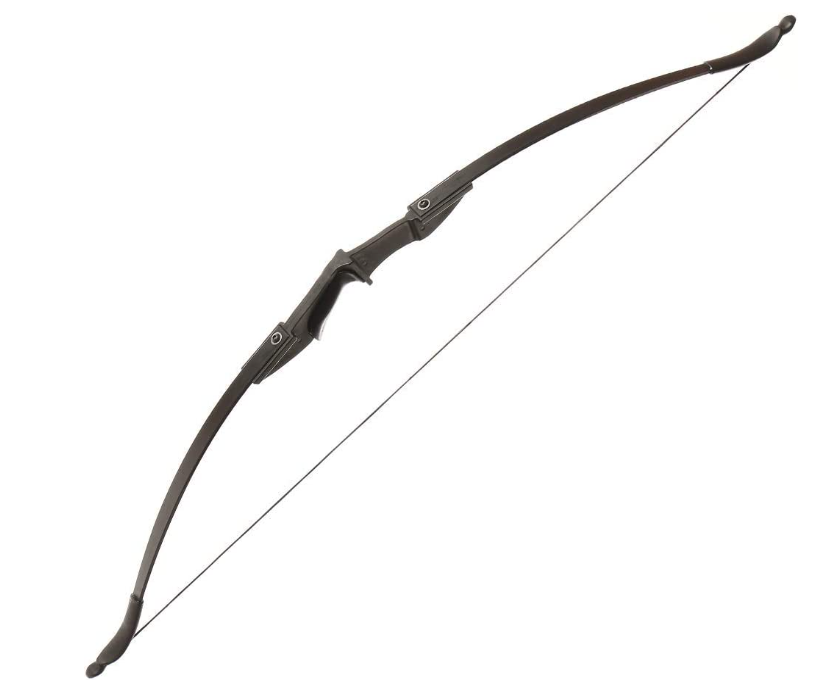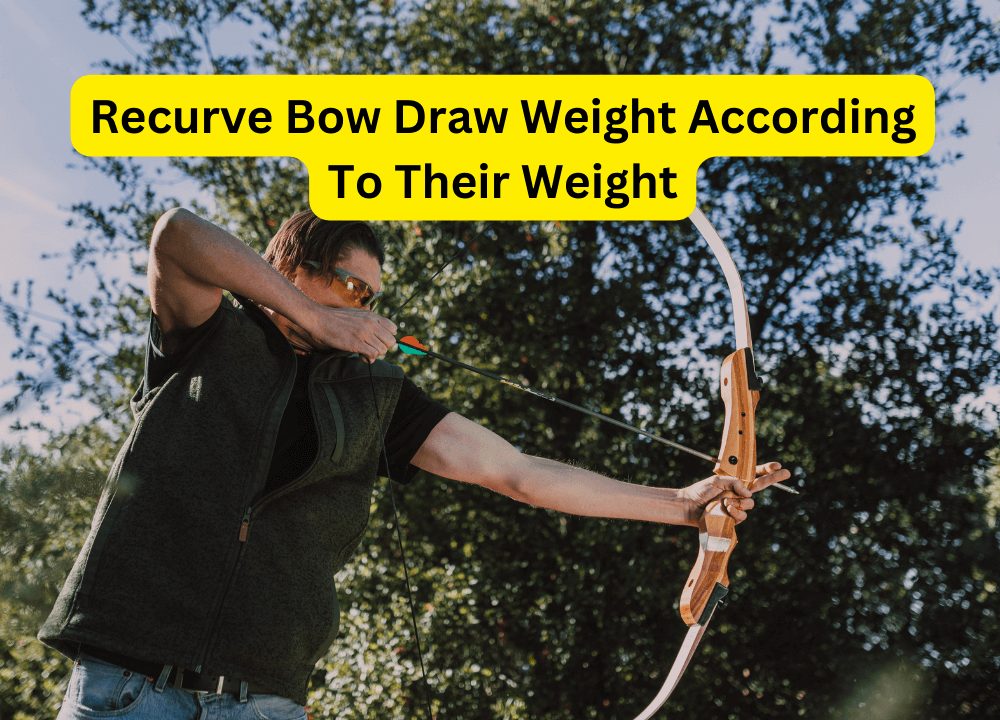
Choosing the right to recurve bow can be daunting, particularly for those new to archery. A recurve bow has a unique design that allows more energy transfer from the bow to the arrow—resulting in a faster and more powerful shot. Recurve bows are famous among archers and hunters for their versatility and ease of use. They are also used in Olympic archery competitions. Yet, with many available options, it can take time to determine which bow best fits your needs.
This guide will help to take the mystery out of how to choose a recurve bow. We will cover choosing the best recurve bow from the multiple options available. Also, discuss the criteria you should consider when buying and tips for measuring and maintaining your new bow. By reading this article, you will understand and be able to select the best recurve bow for you. Whether you are a new or a seasoned archer, this guide will help you master the art of archery.
Intended Use Of A Recurve Bow
How to Choose a recurve bow depends on why you want to buy it. You wish to recurve bow for practice or hunting. When choosing a recurve bow, consider what you will use it for. Determining the intended use of a recurve bow is vital when deciding which model to buy. You can use recurve bow for hunting and target practice. But the specific requirements for each use differ.
How To Choose A Targeting practice Recurve Bow
When using a bow for target practice, any projection from a reputable list of recurve bows for beginners will suffice. The main focus is accuracy and consistency when using a recurve bow for shoot practice. These bows are perfect for target shooting. They may have a lower draw weight and shorter length, which is easier for beginners to handle.
It’s important to choose a well-balanced bow, easy to hold and has minimal hand shock. It’s crucial to select a draw length that is comfortable for you and fits your body size and arm length. Picking the wrong draw length can lead to discomfort and poor shooting form. Furthermore, you can also select a bow with a more aesthetic design and color, making it more enjoyable to use.
How to Choose A Hunting Recurve Bow
When using a recurve bow for hunting, a bow with a higher draw weight of 40 pounds or more is necessary for the big game. Because a higher draw weight provides more power and force to the arrow, it allows traveling farther and with more force. It’s crucial to consider the length of the bow for ease of transport and maneuverability.
A shorter bow is more manageable in the field, and a blind. Consult a draw weight chart to determine the appropriate draw weight for beginners based on body weight. Choosing a durable bow that can withstand harsh weather conditions is crucial when hunting. Selecting a low noise level bow is essential to avoid alarming the game.
A bow with an adjustable draw weight benefits hunters. Who may be hunting different games and need to adjust the projection. Some hunters prefer a traditional design and materials for their hunting bow. While some choose designs and materials that are more modern.
How To Choose Draw Weight On A Recurve Bow
The draw weight is essential when you see how to choose a recurve bow. The draw weight of the bow refers to the force applied to the bowstring to pull it over a distance of 28 inches. The bow’s draw weight increases with length, increasing both its force and the distance your arrow will fly.
For target practice, a lower draw weight is enough, as the arrows only need to be via the cardboard or foam of the bullseye, which doesn’t need much energy. A draw weight of 20-30 pounds is usually used for target practice.
Yet, for hunting, a higher draw weight minimum of forty pounds or more is necessary for larger game. This is because a higher draw weight provides more power and force to the arrow, allowing it to travel farther and with more force.
It’s also important to remember that not all newbies can handle a longer draw-weight of the bow, so it’s good to consult a draw-weight chart to determine the approximate draw-weight range you’ll be able to handle as a beginner based on your body weight. And with practice, you can quickly build up your draw weight.
How To Choose A Recurve Bow Draw Length
When considering the bow length, it’s essential to remember that a longer bow length generally results in more accuracy. It provides a longer sight window and a more stable platform for the arrow. Yet, transporting and maneuvering in the field can also be more difficult. For hunting, a shorter length may be more manageable in the area and a blind. While for target practice, a longer bow length may be preferable for accuracy. It’s essential to consider both the intended use and the ease of transport when choosing the appropriate bow length for you.
Decide On Take-Down Or One-Piece Recurve Bow
1- Take-down Recurve Bow
A take-down bow is a bow that can be disassembled into three pieces (riser and two limbs) for ease of transport and storage. The main advantage of a take-down bow is the ease of transport and storage. It can disassemble and fit into a small case or bag. You can also change out different limbs to adjust the draw weight or length of the bow. Yet, the main pro is that the connections of the limbs to the riser may become loose over time. Need extra time and tools to assemble and disassemble.
2- One-Piece Recurve Bow
A one-piece bow is a bow that cannot disperse and is typically one solid piece. The main advantage of a one-piece bow increases stability and durability. There are no connections to come loose over time. Additionally, it can do without needing extra tools to assemble and disassemble. Yet, the con is that it is difficult to transport and store. It cannot disperse and must be transported in a long case or bag.
When choosing between a take-down or one-piece bow, you must prefer your intended use. You must prefer your intended use. Also, consider how you plan to transport and store your bow. A take-down bow may be a better option if you plan to travel with your bow or have limited storage space. If stability and durability are your main concerns, a one-piece bow may be the better choice.
Steps of How To Choose A Recurve Bow
The following steps will help you determine how to choose a recurve bow for archery. This guide is helpful if you are a beginner and want to buy a recurve bow.
Step 1- Determine The Draw Length Of Recurve Bow
This is the distance between the grip and the back of the bow when you are at full draw. A professional archery shop can help you measure your draw length.
Step 2- Choose Recurve Bow Size
Recurve bows to come in different sizes, measured by the bow’s length. Generally, a shorter bow is more maneuverable, while a longer bow is more stable.
Step 3- Consider The Bow’s Draw Weight
The draw weight is the force need to pull the bowstring back. A higher draw weight means more power and difficulty in steadying the bow.
Step 4- Decide On A Riser Material
The riser is the central part of the recurve bow that you hold. Risers can be made from wood, aluminum, or carbon fiber.
Step 5- Look at Recurve Bow Limb Material
The limbs are the top and bottom sections of the bow that attach to the riser. Wood, fiberglass, or carbon fiber make the bow’s limbs.
Step 6- Think About Your Intended Use
Are you planning on using the bow for hunting or target shooting? Different projections are better suited for other uses.
Step 7- Try Before You Buy
Test-shoot several different bows to find the one that feels best.
Step 8- Read Reviews & User Feedback
Check out the reviews and feedback of other customers who have already used the product.
Step 9- Purchase From A Reputable Dealer
Buying from a reputable dealer will ensure that you are getting a quality product and will have a point of contact in case you have any issues with your bow.
Summary Of How To Choose a Recurve Bow
Here, we discuss how to choose a recurve bow. When selecting a recurve bow, it’s crucial to determine your intended use (target practice or hunting). Pick a bow with the appropriate draw weight and length. For hunting, a draw weight suggests 40 pounds or more. They should choose bow length based on ease of transport and maneuverability. Consider transport, storage, stability, and durability factors are essential to consider your physical capabilities and consult a professional to determine the correct draw weight and bow length. Choosing a comfortable bow that suits your needs is the most important thing. We hope this guide helps you understand how to choose a recurve bow according to your criteria.




